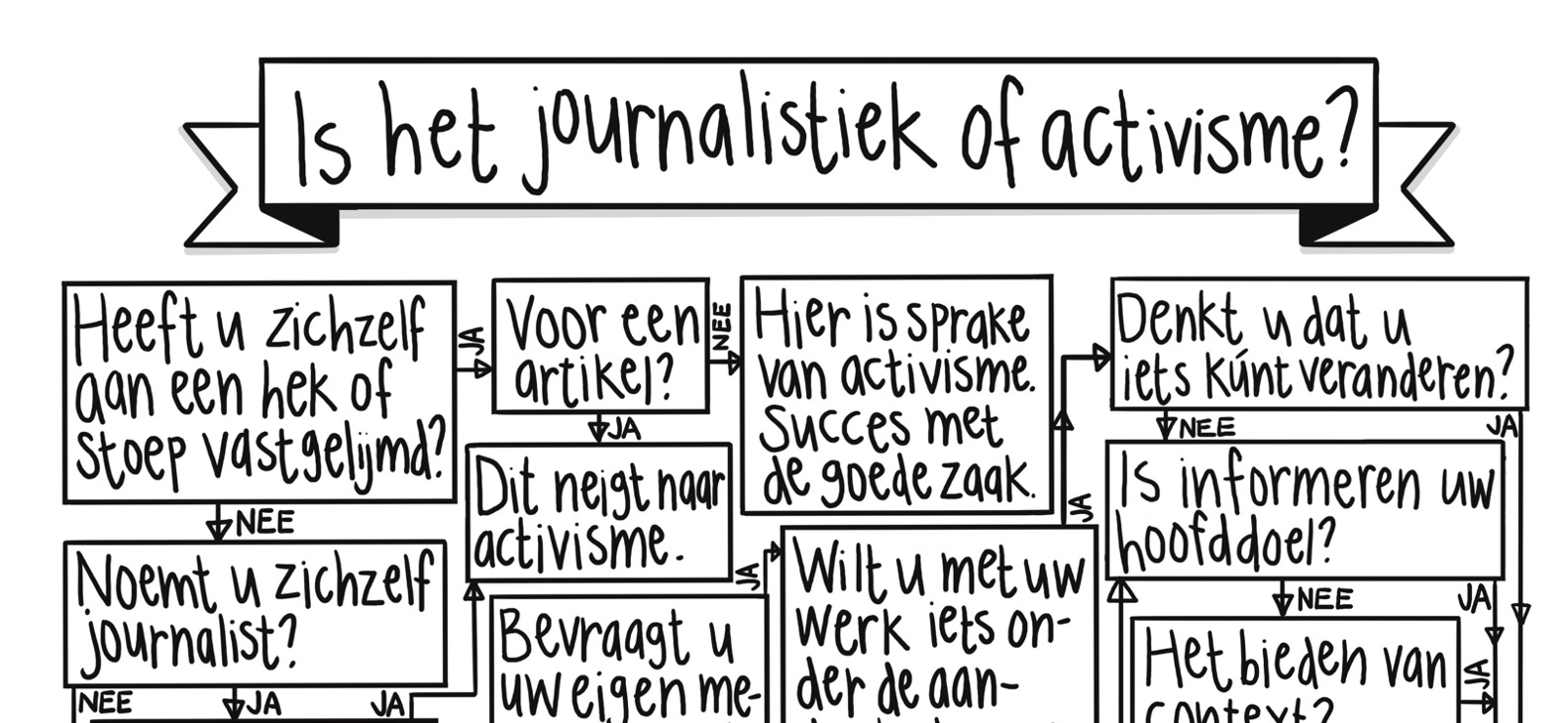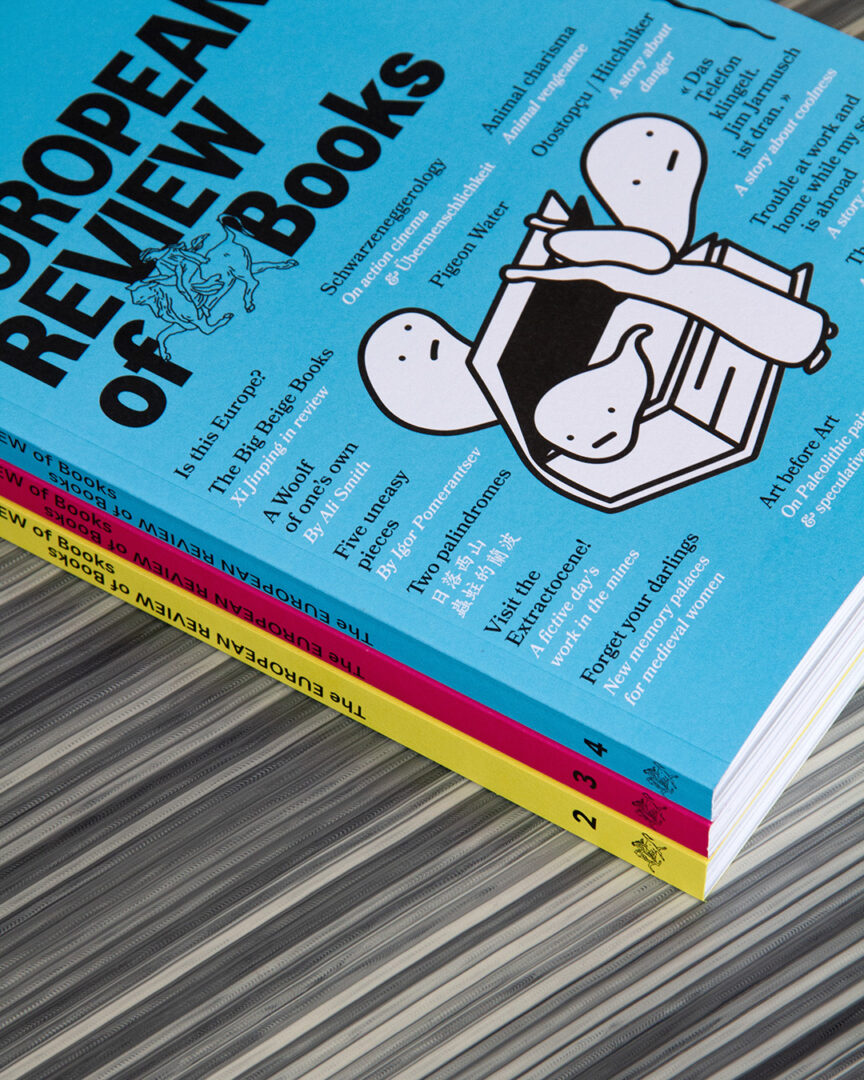
Research on Leadership in Journalism: 'Times Have Changed. We Need Smart Thinkers Without Egos'
What defines good leadership? And why is it crucial for journalism’s role in democracy? Karlijn Goossen explored these questions in a study commissioned by the Democracy and Media Foundation.
By Lisa Peters
For a long time, leaders—both in journalism and beyond—were typically men, which may have led us to associate leadership with a particular style. But, as Ilse Openneer, the editor-in-chief of RTL Nieuws, told Villamedia: “No one wants a 'Bokito' at the top anymore.”
In fact, it turns out we need the exact opposite. “Times have changed. We need smart thinkers without egos,” says Karlijn Goossen over her oat milk cappuccino at a café in Utrecht Central Station, surrounded by stacks of Quote, Vogue, and Quest magazines. “Journalistic leaders should primarily serve their colleagues.”
Goossen recently returned from a train trip to Leipzig with her wife, Beitske de Jong, a presenter at NPO Klassiek. “We delved into Bach first, then into the DDR and the Third Reich. It reminded me how fragile our democracy is and how unaware we are of it. Not so long ago, we lived in a world of mass surveillance, propaganda, and lies. Today, we hand over all our data without a second thought and barely consider the consequences.”
In 2023, Goossen conducted research for the Stichting Democratie en Media on why improving leadership in journalism is so vital. The seed for this study was planted in conversations she had with people like Karel Smouter (now co-editor-in-chief of Trouw), Klaske Tameling (formerly with NPO Radio 1), Freek Staps (ANP), and Anniek van den Brand (DPG). “We all agreed that many developments in journalism seem to be stalled by poor leadership, with damaging effects for journalists, their managers, and ultimately—since it affects quality—the public.”
What has changed compared to, say, twenty years ago? “Journalism is getting bruised and battered due to bad leadership, but it’s no longer being swept under the rug. People are struggling and are now daring to speak up.”
This is evident in the Van Rijn Commission’s report on misconduct at the NPO. In Nothing Seen, Nothing Heard, Nothing Done, over 1,484 employees reported experiencing or witnessing inappropriate behavior in the past year. The experiences ranged from systematic sabotage and physical or verbal abuse to sexual harassment.
Goossen conducted more than seventy interviews with researchers, journalistic leaders, and strategic advisors. The insights she gathered are sometimes alarming. “My disappointment stems from poor leadership, internal politics in media companies, hasty strategic decisions, and the abandonment of journalistic values,” one interviewee said. This sentiment was echoed by "about ten to fifteen others". Here are three ways in which bad leadership is damaging journalism.
- An Untrustworthy Journalism That Holds Double Standards
There’s a common belief that a good journalist will naturally make a good editor or chief editor. After years of producing excellent stories, a journalist is promoted to a leadership role, suddenly facing a whole new set of responsibilities. “Journalists fall into these roles without being properly prepared,” says Goossen.
She finds this “quite bizarre.” Goossen spent thirteen years as a lecturer in journalism at the Christian University of Applied Sciences in Ede. “We wouldn’t tell a journalism student: ‘Go make a podcast, and here’s the deadline. Good luck!’ No, we explain how podcasts work, the different formats, what to consider during recording. And we give them space to practice and learn. We need to approach leadership the same way.”
Als de journalistiek serieus genomen wil worden door de buitenwereld, moet de journalistiek goed leiderschap veel serieuzer gaan nemen.’ Want: with great power comes great responsibility. Schandalen in de journalistiek hebben impact op de geloofwaardigheid en het imago als onafhankelijke macht in de democratische rechtsstaat. ‘Je kan niet anderen de maat nemen in tal van #MeToo-publicaties en vervolgens zelf geen haar beter blijken. Dan word je gezien als subjectief en meet je met twee maten.’

- Lack of a Clear Vision
Newsrooms are running at full speed, with enormous work pressure, yet often lack a clear vision. There’s hardly any time to reflect on why things are done a certain way. “At the public broadcaster, for instance, there’s little discussion about the value of journalism and the pressure we’re under. That affects journalistic quality and how we handle digital innovations.”
Mid-level managers in journalism find themselves squeezed between the demands from the newsroom and the directives from above. “These people usually have a keen sense of what should be done from a journalistic perspective, but often that’s not aligned with the organization’s strategy, which is driven by ratings, shareholders, or algorithms. As a result, journalistic values are sidelined.” The unintended effect, according to Goossen, is that those who should be in these positions become disillusioned, while more status-driven colleagues remain.
A clear example is an interview the SDM conducted with former editor-in-chief Sjirk Kuijper and editor-in-chief Sophie van Oostvoorn. “When I started as a manager, I promised myself I wouldn’t do it for more than eight years; that seemed healthy,” Kuijper says. “I had a cynical view of male leaders who eventually consider themselves indispensable and become too accustomed to their position, status, and income.” According to Goossen, his cynical perspective is accurate. Kuijper has since stepped down as editor-in-chief and returned to writing for the newspaper.
Since this summer, Goossen has been Genre Coordinator for Journalism at the NPO. Over the past two years, she also held a leadership role as deputy editor-in-chief at the EO, where she saw how far the organization had drifted from its journalistic mission. “When I started, there was a proposal to change the job titles of my colleagues to ‘content creators.’ I refused. We had serious journalists on our team; we’re not going to call them ‘content creators.’ That completely misses the point of what journalism is.”
Another issue: people who consume journalism are not “consumers,” according to Goossen. “They are citizens. You can certainly ask what their needs are and how to reach them, but your core task is journalism. The most important question is: What do people need to know?”
Poor leadership also leads to journalists from non-Western backgrounds leaving the profession, Goossen observes. “They don’t want to work in an environment with so little vision and space for them.” This lack of representation has democratic consequences: which groups do you still reach as a media outlet, and whose problems are overlooked because they’re ignored?
- Tone-Deaf to Societal Change
This, according to Goossen, is the crux of the problem. Blind to a changing society and stuck in survival mode within their own organizations, journalism risks becoming irrelevant. “That’s why the blows from the right keep catching us off guard. It’s happening as we speak. We haven’t looked far enough ahead at what social media and big tech mean for journalism’s relevance. We need strong journalistic leadership to make well-informed decisions between journalistic values and social reality.”
It doesn’t help that the media landscape is increasingly dominated by giants like the NPO, DPG Media, and Mediahuis. They operate like cargo ships that are slow to change course. “That’s the well-known issue with legacy media; they’re cumbersome organizations that find it hard to adapt or pivot. But that’s exactly what’s needed in an unstable world.”
Journalistic leaders, therefore, must also be people who can handle pressure and uncertainty. “The media landscape is changing so rapidly, you can’t plan more than five years ahead as a news outlet. And even then, you’ll need to adjust your strategy along the way. The tech sector is much better at adapting to a constantly changing environment.”
There’s no one-size-fits-all solution, but Goossen hopes it will be possible to establish an institute for journalistic leadership. “In other countries, these issues were recognized much earlier, and official programs for journalistic leadership have been developed. We don’t just need a single course or workshop; we need to cultivate a new leadership culture, including peer coaching groups. A newly appointed editorial manager needs something completely different than a (deputy) editor-in-chief or producer. These learning paths all need to be thoughtfully designed and developed.”
“Traditionally, we think of a leader as a sort of general leading the troops. A Rupert Murdoch or Christian van Thillo,” says Goossen. But her research shows that a good journalistic leader is someone who is constantly focused on the people they lead. “It’s someone who balances between themselves, the organization, and the audience. Someone who is highly socially sensitive, incredibly communicative, and, above all, someone with little ego who can still make decisions.”
However, simply cutting out everyone who doesn’t fit that profile is not the solution, according to Goossen. The traditional image of the general has left us with few introverted or female leaders, though this is slowly changing. “It’s not out of malice. We don’t need to eliminate all current leaders. Journalism is under enormous pressure. If we leave all these armies without their generals, things won’t improve.”


